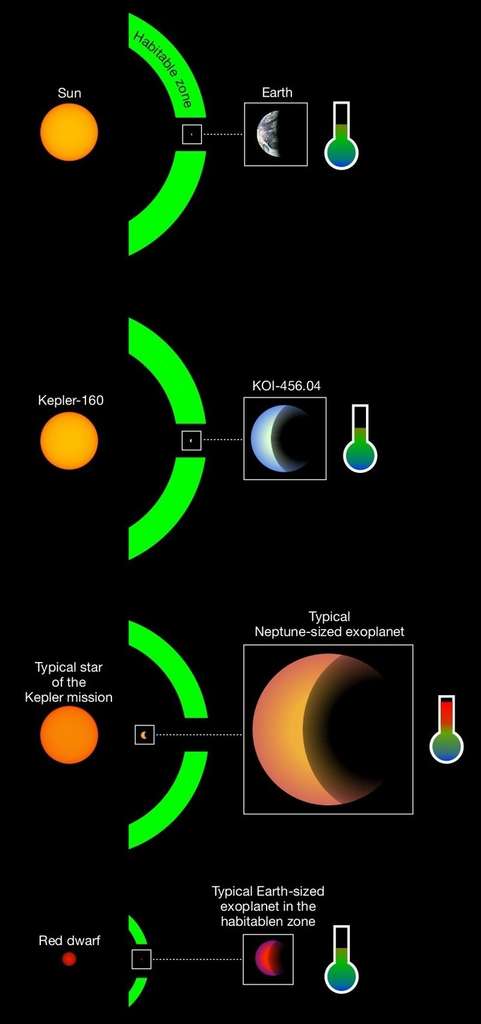The star Kepler-160, similar to the Sun, was already known to be accompanied by two overheated planets. In a new study, two new planets are revealed in this system, including a potential super-Earth located in the habitable zone of the star.
More than 4,000 exoplanets are known to date, but few of these are Earth-sized planets in the habitable zone of a Sun-like star . Kepler-160 is, as such, a notable system which is the subject of a new study conducted by René Heller and published this June 4 in Astronomy & Astrophysics .
The central star of the Kepler-160 system is similar to the Sun : its diameter is 1.12 times that of the Sun and its surface temperature is 5.200 ° C, compared to 5.500 of the Sun, which means that the two stars have the brightness almost identical. This star, also known under the designations KIC 7269974 and KOI-456, was observed by the Kepler space telescope between 2009 and 2013.
Thanks to their transits , two first planets were then discovered very close to this star: Kepler-160 b, a super-Earth (1.7 times the diameter of the Earth) which goes around the star in 3.4 days , and Kepler-160 c, a planet probably similar to Neptune (3.1 terrestrial diameters) which goes around it in 13.7 days. In comparison, Mercury orbits the Sun in 88 days. The periodicity of Kepler-160 c transits seemed, however, to be modulated by the presence of a third planet that does not transit.
Two new planets
René Heller , an astrophysicist at the Max-Planck Institute for Research on the Solar System (MPS), in Göttingen (Germany), and his collaborators were able to confirm the existence of this disruptive planet. The physical and orbital characteristicsof this object designated Kepler-160 d, however, remain relatively unconstrained: a mass between 1 and 100 times that of Earth and an orbital period between 7 and 50 days. In any case, this planet would therefore also be very hot, like its two neighbors above.
However, Heller and his colleagues discovered a potential other planet in the system that would be more “terrestrial”. Indeed, this possible fourth companion, provisionally designated KOI-456.04, would have a diameter of 1.9 times that of the Earth and would circle its star in 378 days, which would place it within the habitable zone of its star. The researchers remain cautious for the moment by considering this object only as a candidate, but report that it is, all the same, a promising candidate with 85% probability that it is really a planet and not of an instrumental artifact.
Including a big cousin from Earth
If KOI-456.04 is really a planet, then it would be one of the few known planets of relatively terrestrial size to be in the habitable zone of a star similar to the Sun. Indeed, most of the known exoplanets less than twice the diameter of the Earth, with potentially lenient surface temperatures, are in orbit around a red dwarf star , while hot planets are more typically detected Neptunian size around stars similar to the Sun.
The surface conditions on KOI-456.04 could therefore be similar to those known on Earth, provided that its atmosphere is not too massive and does not resemble that of Earth. The amount of light received from its host star represents about 93% of the sunlight received on Earth. If KOI-456.04 has an essentially inert atmosphere with a moderate greenhouse effect similar to that of Earth, its surface temperature would be +5 degrees Celsius on average , about ten degrees lower than the average temperature on Earth.
Additional observations should confirm or not the existence of this fourth planet. This confirmation could come from some of the most powerful telescopes on Earth or in space mission Plato of the ESA , which will be launched in 2026.
